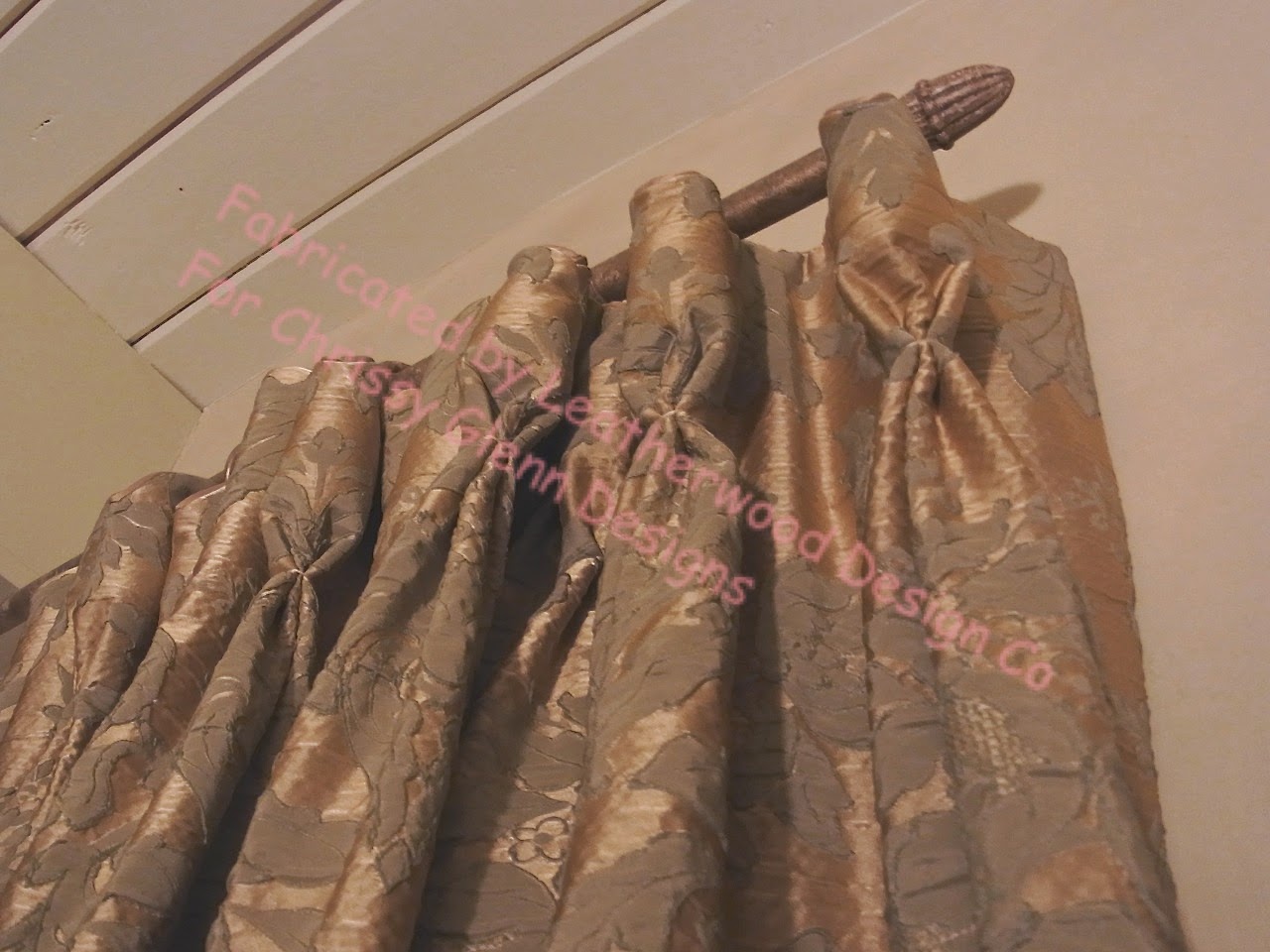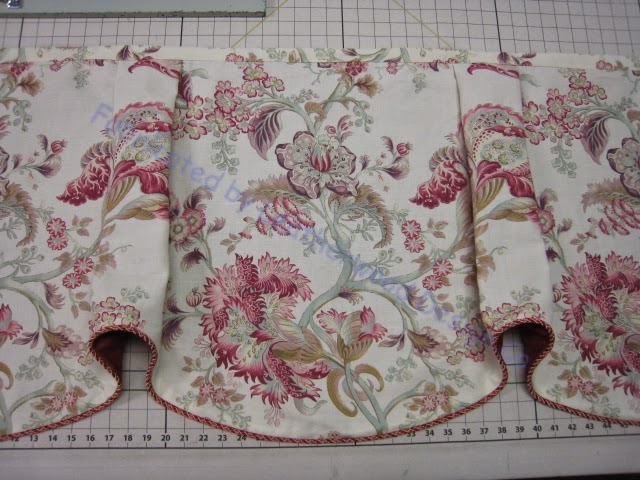After the main body of the shade was assembled, with the microcorded contrast pleats and the bottom brush fringe, the header was created. After the pleats were basted in place, the first row of welt was attached and the seam trimmed.
The header was first glue-basted to ensure a perfect pattern match.
Fusible buckram helped the header keep its shape.
The top row of welt was attached after the valance was stapled to the board.
The header was lined separately, more like a facing I suppose. The back is nice and neat.
The big deal with these valances was mathematical. It was important to match the pattern horizontally, across the swoop and tails; vertically, from the valance to the header; and most difficult, from one valance to the other. The tails needed to center the same section, which at first seemed absolutely impossible. However, in the end, after a lot of head-scratching and experimentation, I got those numbers crunched to my satisfaction. Though there's a slight difference in the pattern on the small valance tails and the large valance tails, the eye is pretty much tricked into seeing it all the same.
I'm pretty happy with these valances!













.JPG)


.jpg)







.JPG)
























.JPG)

